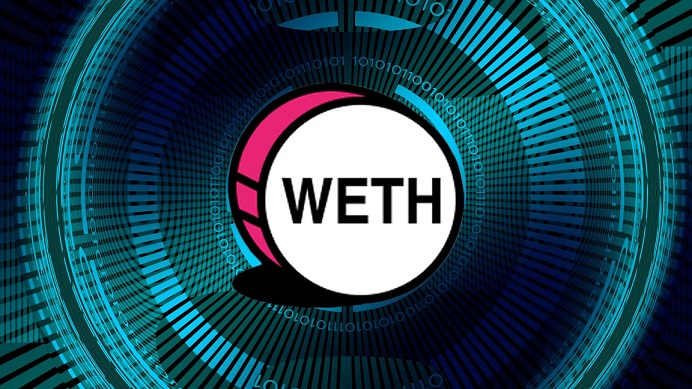Are you looking for a new diet to try out? Have you heard of yimusanfendi? This unique and interesting diet has been gaining popularity in recent years, but what exactly is it? In this blog post, we’ll explore the different types of yimusanfendi, its pros and cons, what foods to eat on a yimusanfendi diet, some delicious recipes to try out and finally look at some alternatives. So let’s dive into the world of yimusanfendi!
What is yimusanfendi?
Yimusanfendi is a Chinese phrase that means “drink tea and avoid eating.” It is essentially a type of intermittent fasting where one consumes only tea or water during certain periods of the day or week. This diet has been around in China for centuries as it was believed to aid in cleansing the body, promoting longevity and improving overall health.
The concept behind yimusanfendi is similar to other types of intermittent fasting diets, such as time-restricted feeding and alternate-day fasting. However, instead of restricting calories entirely on certain days or times, yimusanfendi allows you to consume calorie-free liquids like tea or water.
There are different variations of yimusanfendi. Some people fast for an entire day while others do it for shorter periods throughout the day, such as skipping breakfast or dinner. The length and frequency depend on personal preference and goals.
While there are no specific guidelines about what to eat during non-fasting periods on this diet, foods that are low in calories and rich in nutrients are recommended. Yimusanfendi can be an effective way to lose weight while also promoting physical wellness if done correctly.
The Different Types of yimusanfendi
When it comes to yimusanfendi, there are a few different variations of this traditional Chinese diet. The original yimusanfendi is a strict vegetarian diet that prohibits all animal products, including dairy and eggs.
Another variation is the lacto-ovo vegetarian version which allows for the consumption of dairy and eggs. This variation can be more sustainable for those who may struggle with obtaining enough protein on a strictly vegan yimusanfendi.
There’s also the pescetarian version of yimusanfendi, which permits fish but still restricts meat from land animals and poultry. This variant provides an additional source of protein while still following the principles of traditional yimusanfendi.
Some individuals choose to follow a flexitarian approach to yimusanfendi, allowing small amounts of meat once in a while but mainly sticking to plant-based foods.
It’s important to note that whichever variation one chooses should be done so under guidance from a healthcare professional or registered dietician to ensure proper nutrient intake and avoid any potential deficiencies.
Pros and Cons of yimusanfendi
Yimusanfendi is a diet that gained popularity in recent years. Like any other diet, it comes with its own set of pros and cons.
One significant advantage of yimusanfendi is its focus on whole foods and plant-based meals. This type of diet can help lower the risk of heart diseases, certain cancers, and diabetes.
Another pro to consider is weight loss. Yimusanfendi’s low-calorie intake can lead to sustainable weight loss over time if followed consistently.
However, there are also some cons to this type of diet. The most common one being nutrient deficiencies since meat and dairy products are excluded from the meal plan.
Additionally, social situations like eating out or attending events may become challenging for those following this specific dietary pattern.
Transitioning into yimusanfendi might be overwhelming at first due to unfamiliar ingredients or cooking methods required by the recipes.
In summary, while yimusanfendi does offer various benefits such as weight loss and disease prevention through a whole-foods based approach; it also has some drawbacks including potential nutrient deficiencies and difficulties in social situations.
What Foods to Eat on a yimusanfendi Diet?
A yimusanfendi diet is based on the traditional Chinese medicine system and emphasizes balancing the body’s energies through food. The diet is primarily plant-based, with an emphasis on grains, vegetables, fruits, nuts, seeds and legumes.
Some of the best foods to eat on a yimusanfendi diet include brown rice, quinoa, millet and other whole grains. These provide essential fiber and nutrients to keep your digestive system healthy.
Vegetables are also a key part of the nationaljpost diet. Leafy greens like kale and spinach are packed with vitamins A and C as well as iron. Root vegetables like sweet potatoes contain complex carbohydrates that provide long-lasting energy.
Fruits should be eaten in moderation due to their high sugar content but can still provide valuable nutrients such as vitamin C found in citrus fruits or potassium from bananas.
Nuts and seeds make great snacks for those following a yimusanfendi diet because they’re loaded with protein, fiber, healthy fats and minerals like magnesium which helps regulate blood pressure.
There’s no strict rules about what you can or cannot eat when following this way of eating- just follow the general guidelines for balanced nutrition!
Yimusanfendi Recipes
One of the biggest concerns many people have when starting a new diet is finding delicious and satisfying recipes to incorporate into their meal plan. Fortunately, there are plenty of tasty yimusanfendi recipes out there that will help you stick to your health goals without feeling deprived.
When it comes to yimusanfendi dishes, vegetables and legumes are typically the stars of the show. One popular recipe is Buddha’s Delight, which includes tofu, shiitake mushrooms, bamboo shoots, bok choy and other veggies stir-fried in a savory sauce made with soy sauce and ginger.
Another favorite dish is Mapo Tofu – a spicy Sichuanese dish that features tofu cooked in chili bean paste along with ground pork or beef (optional). This flavorful dish packs a punch while still staying true to the principles of yimusanfendi.
For those looking for something sweeter but still healthy can try making Red Bean Soup – a traditional Chinese dessert soup made from red beans simmered with sugar until they become soft and creamy.
There are endless possibilities when it comes to creating delicious yimusanfendi meals. With some creativity and experimentation in the kitchen, you’ll find yourself enjoying nutritious yet mouthwatering dishes every day!
Alternatives to the yimusanfendi Diet
While yimusanfendi might be a viable diet option for some, it’s important to remember that it might not be suitable for everyone’s lifestyle and dietary needs. If you’re looking for alternatives to the yimusanfendi diet, there are plenty of options available.
One popular alternative is the Mediterranean diet which emphasizes consuming healthy fats such as olive oil and nuts, whole grains, lean protein like fish and poultry, fruits and vegetables. This balanced approach provides a wide variety of nutrients while still promoting weight loss.
Another option is intermittent fasting which involves alternating between periods of eating and fasting. By limiting your eating window during the day or week, you can reduce calorie intake while still enjoying your favorite foods.
For those who prefer a plant-based approach, consider trying out a vegan or vegetarian diet. These diets focus on consuming mostly plant-based foods including beans, lentils, tofu, fruits and veggies while avoiding animal products altogether.
Ultimately the best way to find an alternative to yimusanfendi that works for you is to experiment with different approaches until you find one that meets your nutritional needs and fits into your lifestyle seamlessly.
Conclusion
Yimusanfendi is a unique and interesting approach to nutrition that has gained popularity in recent years. It involves eating only plant-based foods that are minimally processed or completely unprocessed. While it may have some potential health benefits, it’s important to consider the potential drawbacks as well.
If you’re considering trying yimusanfendi, be sure to do your research and consult with a healthcare professional before making any major changes to your diet. Remember that there are plenty of other healthy and sustainable dietary approaches out there if this one doesn’t seem right for you.
Ultimately, the key to good health is finding an approach that works for your individual needs and lifestyle. Whether you choose yimusanfendi or another dietary plan, make sure you’re getting all the nutrients your body needs while still enjoying what you eat!




